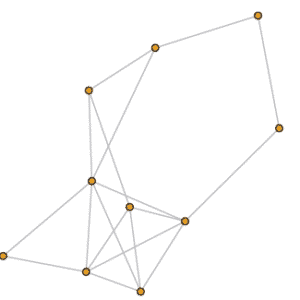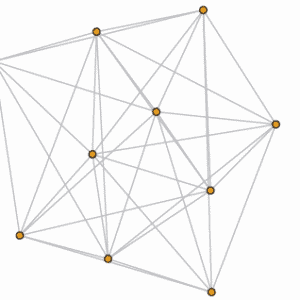As Covid-19 continues to spread, so will research on its behavior. Models that rely mainly on time-series data will expand to cover relevant other predictors (covariates), and one such predictor will be gregariousness. How to measure it?
In psychology there is the standard personality trait of “extroversion,” but that pertains to an individual, and requires individual-level personality surveys. Network analysis has the concept of “density,” which measures how inter-connected a network of people or things is. Density is the proportion of possible connections (edges) that are actually connected. It ranges from near 0 (hardly connected at all) to 1 (fully connected).
Two 10-node networks, one with low-density (left) and one with higher density (right)
Density metrics may be informative in modeling the spread of Covid-19. Obtaining metrics for physical networks will likely be expensive and time-consuming, but social media networks could serve as a useful proxy.

